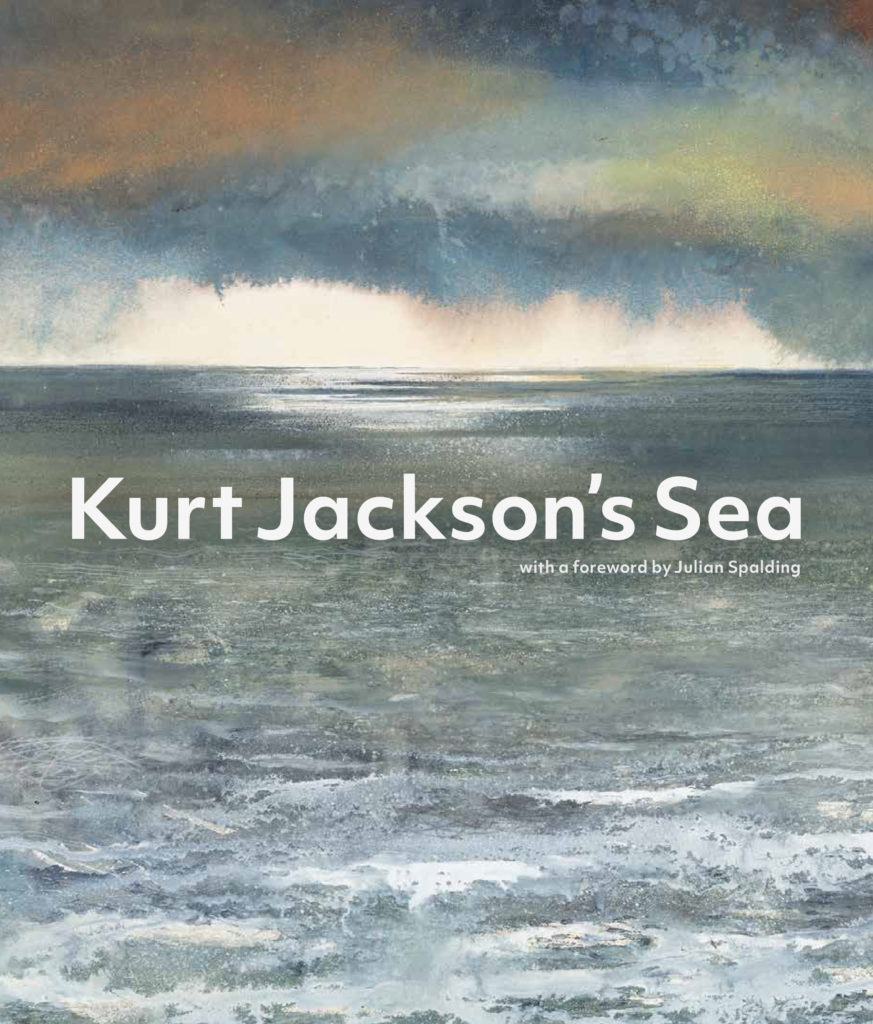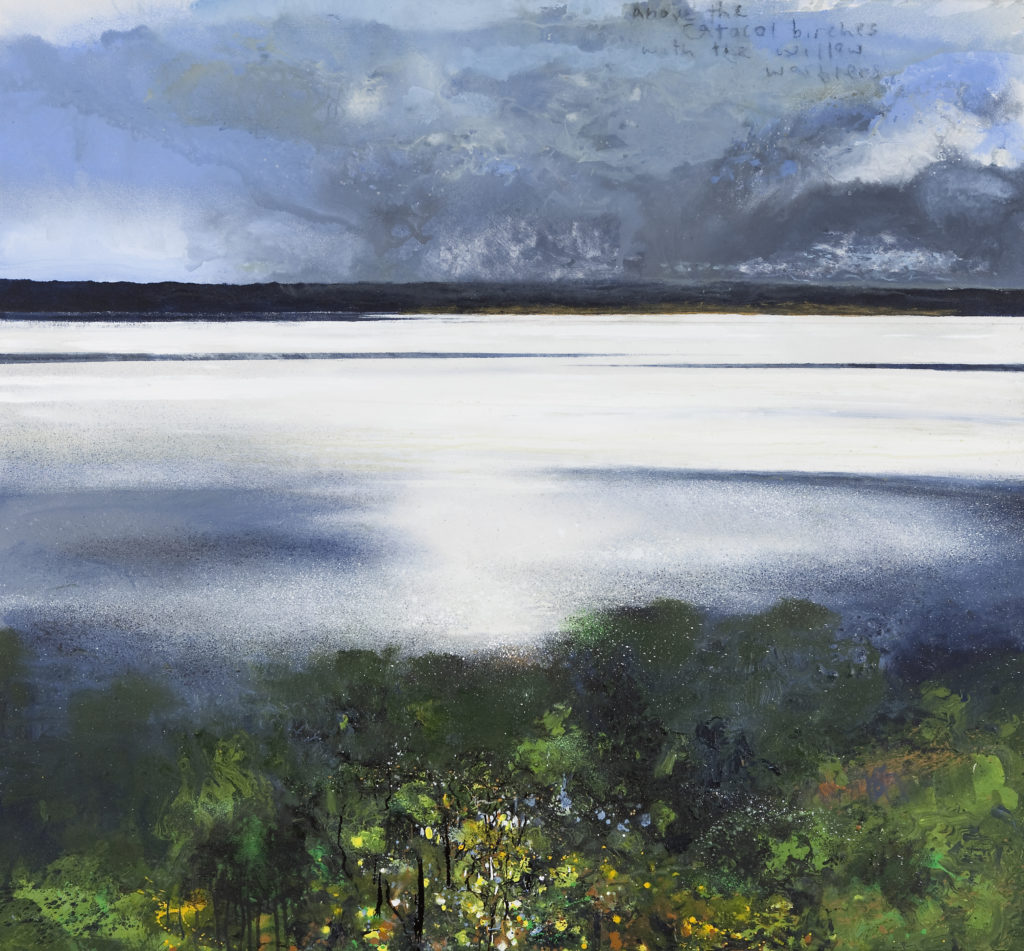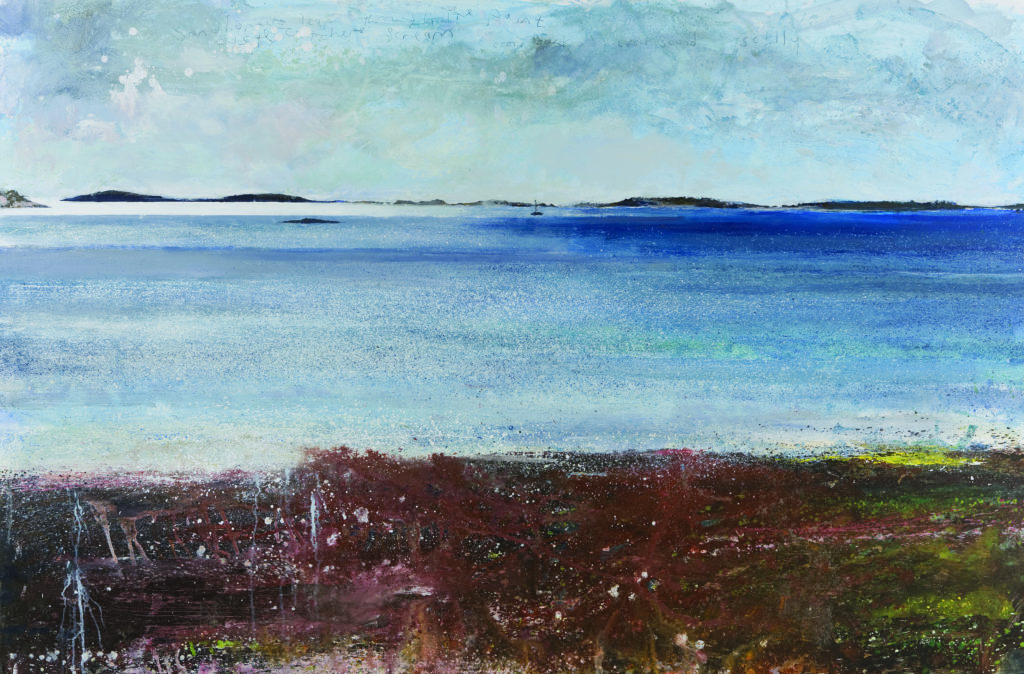Beachcomber and mudlark Lisa Woollett takes a dip in Kurt Jackson’s latest book, dedicated to his depictions of the sea.

This is a beautifully produced book and as it waited to be reviewed, I periodically ran a hand over the cover. With over 200 images, it is the first of Jackson’s books to concentrate on his work portraying the sea, which ranges from large-scale canvases and mixed media collage to sketches, sculpture and poetry. Like Jackson I live in Cornwall, and was distantly aware of his work. But that was all. I know little about art and had never reviewed a book before.
So I began, conscientiously, with the foreword, where Julian Spalding touches on how a contemporary art world is suspect of work that’s accessible, marginalising the plein-air painting of seascapes as old-fashioned. He goes on to make the case that what Jackson does is vital and new, closer to a gig or performance, or live film of the natural world.
Most of the writing, though, is Jackson’s own; an engaging reflection on the evolution of his work through a series of outdoor painting sessions. Early on, he describes childhood frustrations while on beaches with his artist parents, and the ‘contradiction between… the sheer spontaneous energy at the water’s edge and the overworked results on the page on my lap’. So, after a degree in zoology at Oxford University, he began allowing ‘the paint to land, move, flow, trickle and pour’, and embraced interruptions from the natural world. Sometimes, the work was destroyed or washed away. Other times, those chance interventions could be ‘exciting and beneficial and actually contribute — knock me out of my complacency to make me take more dynamic unusual decisions.’ Place now affected the work directly. Paint mixed with sand and was diluted by rain, or dried too quickly in the wind.

Above the Catacol birches with the willow warblers, 2012. Oil on canvas
Returning to Boscastle in 2016, he describes pre-performance nerves in the build-up to unrolling tarpaulin-sized canvas on the shore. Later, watched by onlookers, there are moments of desperation, split-second decisions as paint runs the wrong way. Yet the angst is worth it, he says, for the freedom of working at that scale and using improvised techniques (perhaps seaweed or the soles of his feet). Back at the studio, the paintings are left facing the wall for a week or a month before he starts to rework them. The challenge then is to retain as much of that initial spontaneity as possible, the accidents and signs of the elements.
Drawn to include what can’t be seen, Jackson also annotates his work in the paint. Scrawled into the sky of a Scilly dusk is shrews run over my feet. Out painting Gull Rock he is watched by a wheatear. Sometimes it’s a simple list of birds: Dunlins, turnstones, sanderlings, pipits, ringed plovers. Other times it might a sound — loud sea, cow moo — or a smell: gorse or the stink of guano, the fags of decorators painting a lighthouse. Cobnor Point is Ridiculously windy and Praa Sands Bit cold. Out at Wolf Rock, ‘battling with this blue void’, his attention shifts to the glint of distant windscreens parked at Land’s End. By the Scillies’ Crow Sound, sandhoppers leap through the paint. I know that explosive escape as seaweed is disturbed. Standing in front of the two-metre original, how closely would I peer for the marks?

Sandhoppers leap through the paint, oystercatchers scream, Crow Rock, Crow Sound, Scilly, 2007. Mixed media on linen
While much of the work is of Cornwall — where Jackson has lived since 1984 — the book moves on to series from other coasts. There are squalls over Irish bogs, glittering Greek blues, lots of weather at Scotland’s Arnamurchan. Beside the North Sea, windblown grit gets in ‘shoreline ochres’ and out on Essex mudflats he mixes mud with paint so it puddles. In ‘Mermaid’s Tears’ the shore is embedded with plastic.
More than once I close the book with a sense of surfacing, from seawater mixed with paint. In all that weather and stillness and rush is so much recognition. Over and over again the paintings bring back half-forgotten moments of connection at the edge of the sea: the sheen of mudflats, the marbling of foam where a wave has passed, times when the sea is the source of the light. It turns out I don’t care what a contemporary art world might think. It feels like I’ve been to the beach.
*
‘Kurt Jackson’s Sea’ is published by Lund Humphries and out now (£35).
Lisa Woollett is a writer and photographer. She is the author of ‘Rag and Bone’ and ‘Sea Journal’.